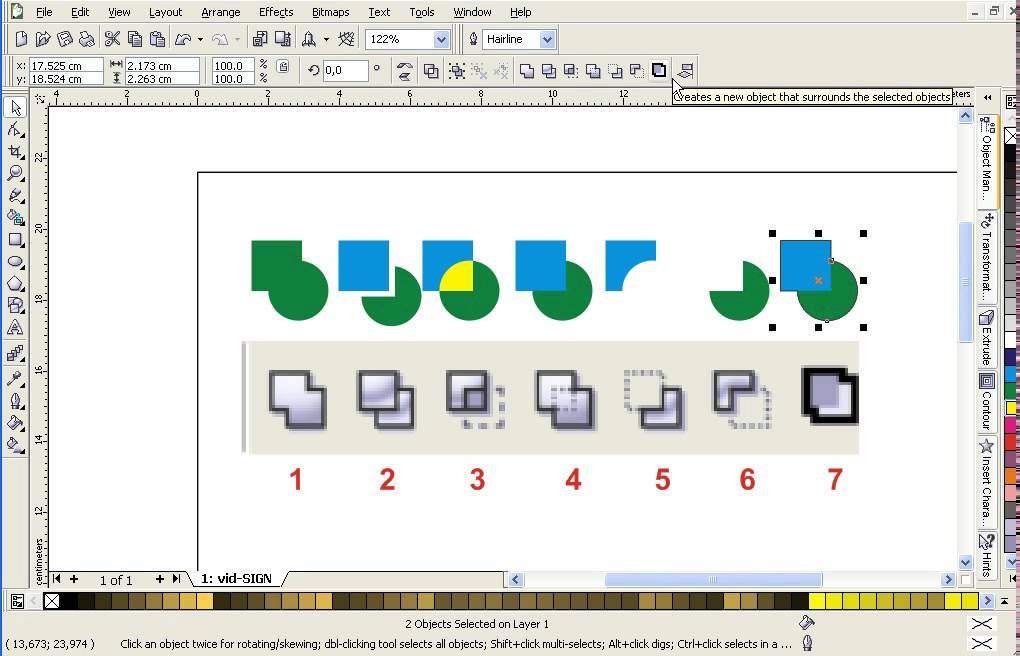Introduction:
In the expansive realm of graphic design, CorelDRAW stands as a premier platform, providing designers with a versatile toolkit to shape their creative visions. Among the multitude of features that contribute to precision and refinement in design is the ability to trim objects. In this exhaustive guide, we will delve into the intricacies of trimming objects in CorelDRAW, exploring applications, customization options, and advanced techniques that elevate design manipulation to new levels of accuracy and sophistication.
Understanding Trimming in CorelDRAW:
Trimming is a fundamental technique that allows designers to precisely cut or remove portions of objects, enabling the creation of clean and polished designs. This process is particularly valuable when working with intersecting or overlapping shapes, providing a method to trim excess elements and create seamless, well-defined contours.
Accessing Trimming Tools:
CorelDRAW seamlessly integrates trimming tools into its interface, offering designers an intuitive means to access and apply these indispensable features.
- Trim Tool:
- The Trim tool serves as the primary instrument for trimming objects. By selecting the Trim tool, designers can interactively define the areas to be trimmed or removed, resulting in a refined and precisely crafted design.
- Interactive Property Bar:
- The Interactive Property Bar, a dynamic toolbar that adapts to the selected tool, provides quick access to trimming options. When the Trim tool is active, designers can find relevant settings on the Interactive Property Bar for efficient adjustments, including mode selection and customization options.
Trimming Techniques:
Trimming objects in CorelDRAW encompasses a range of techniques that cater to diverse design requirements.
- Interactive Trimming:
- Interactive trimming involves real-time adjustments as designers use the Trim tool to interactively define the areas to be trimmed. This technique allows for dynamic and immediate modifications, ensuring precision in design refinement.
- Rectangular and Circular Trimming:
- For geometric precision, designers can utilize rectangular or circular trimming options. These tools are ideal for achieving clean and straight cuts or rounded edges, providing a structured approach to trimming objects.
- Selective Trimming:
- Selective trimming involves using the Trim tool to selectively remove specific portions of objects, providing designers with control over the final shape and composition. This technique is particularly useful when intricate design details need to be preserved.
Customization Options:
CorelDRAW enhances the trimming process by offering customization options that cater to the specific needs of each design.
- Trimming Modes:
- Designers can choose from different trimming modes, such as Basic Trim, Smart Trim, and Inside/Outside, depending on the design requirements. Each mode offers a unique approach to trimming, allowing for flexibility and adaptability in various scenarios.
- Undo and Redo Functionality:
- The ability to undo and redo trimming actions ensures a non-destructive and iterative design process. Designers can experiment with trimming, refining their designs with confidence, knowing they can easily revert to previous states.
- Custom Trim Shapes:
- CorelDRAW allows designers to create custom trim shapes, enabling a tailored approach to design refinement. By defining custom shapes, designers can achieve intricate and personalized trimming effects, adding a layer of creativity to the process.
Advanced Techniques and Applications:
Beyond the basics, CorelDRAW empowers designers to explore advanced techniques for trimming objects, unlocking new dimensions of precision and creativity.
- Layered Trimming:
- The layered trimming technique involves applying multiple trimming actions to different layers or objects within a design. By combining various trims, designers can achieve complex compositions, creating designs with intricate layering and precise detailing.
- Text and Typography Trimming:
- Trimming is valuable when working with text and typography, allowing designers to refine and customize letterforms with precision. Whether trimming serifs or adjusting letter spacing, designers can achieve polished and professional typography.
- Patterned Trimming:
- Designers can utilize patterned trimming to create unique and visually interesting designs. By defining custom patterns for trimming, designers can add texture and detail to their designs, resulting in visually captivating and intricate compositions.
Applications in Various Design Disciplines:
The ability to trim objects in CorelDRAW finds diverse applications across design disciplines, showcasing its adaptability and versatility.
- Logo Design and Branding:
- In logo design and branding, trimming is crucial for creating clean and recognizable symbols. Designers can use trimming to refine intricate logo elements, ensuring a memorable and visually cohesive brand identity.
- Architectural and Technical Illustrations:
- Trimming is valuable in architectural and technical illustrations, allowing designers to precisely cut through intersecting lines and create accurate representations. This technique contributes to the creation of detailed and visually clear technical drawings.
- Product Design and Packaging:
- The ability to trim objects is indispensable in product design and packaging. Designers can use trimming to create precisely cut product shapes and refine packaging designs, contributing to the overall aesthetic appeal of the product.
- Digital Illustrations and Artwork:
- In digital illustrations, trimming allows for the creation of intricate and detailed compositions. Designers can use trimming to refine shapes, cut through layers, and achieve polished and visually striking digital artworks.
- Web and User Interface Design:
- Trimming is beneficial in web and user interface design, allowing designers to achieve clean and precise layouts. Whether trimming images for thumbnails or refining interface elements, designers can create visually appealing and user-friendly designs.
Conclusion:
Trimming objects in CorelDRAW is a testament to a designer’s ability to achieve precision, clarity, and refinement in their digital designs. Whether working on logos, technical illustrations, product designs, or digital artworks, designers rely on trimming tools to bring their visions to life with accuracy and sophistication.
As designers continue to explore the extensive capabilities of CorelDRAW’s trimming tools, they unlock new dimensions of creative freedom and precision. The ability to trim objects with confidence allows designers to navigate the complexities of graphic design, transforming concepts into visually captivating and artistically expressive artworks. CorelDRAW, with its intuitive interface and powerful trimming features, remains an indispensable tool for designers seeking to achieve both precision and creativity in their digital compositions.
